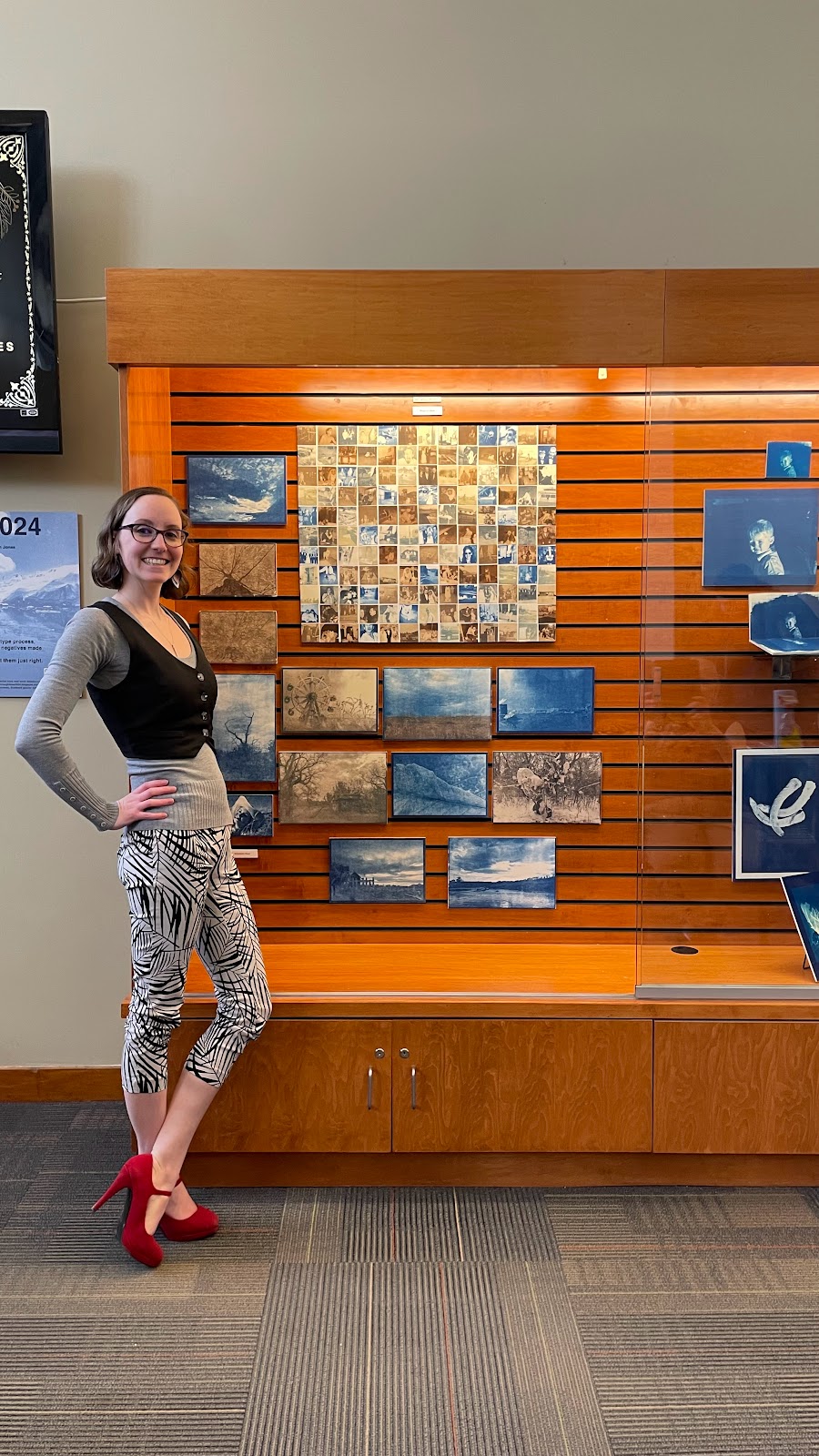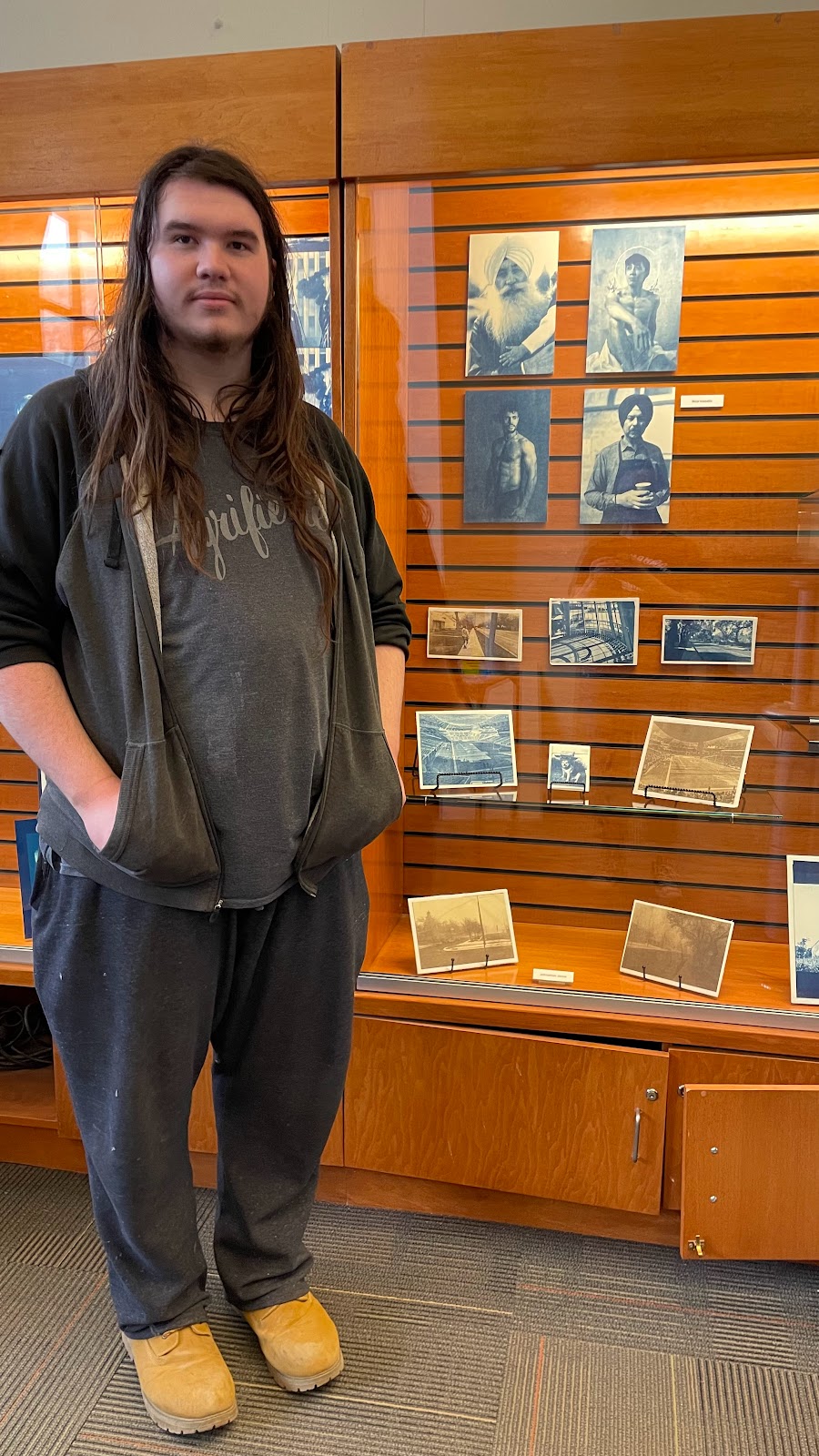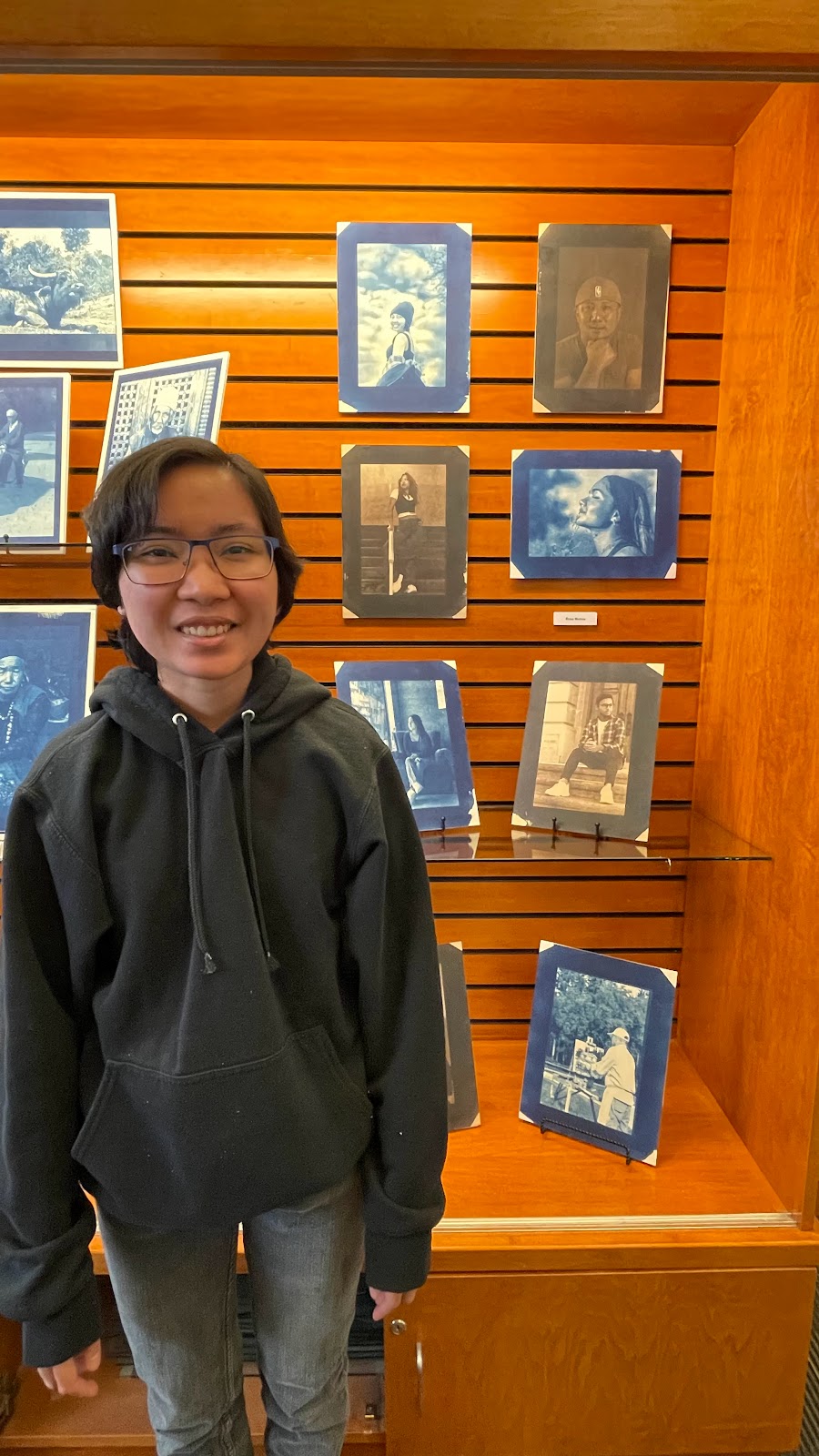For the past several weeks, students have been working on making cyanotype photographs using digital negatives. As with their Herbarium specimens, these images are made using a contact printing process, where the printed negative is sandwiched between the coated/sensitized paper and glass. What is different, however, is that instead of silhouettes in the negative, these are continuous tone (mostly) representational images.
29 years ago, I was in my last semester of my BFA in Interdisciplinary Fine Arts Studies at York University, where I had worked as a darkroom technician for Jamie Ferguson, and taken classes in alternative photographic processes with Professor Jack Dale. Then, if we wanted to make cyanotypes (or van dyke brown, or gum bichromate prints) from enlargements, we used ortho film to create internegs from our 35mm film. This was a complicated chemical process undertaken in the darkroom, and our results were limited by the range of the film and the qualities of our originally shot negatives.
 |
| Risa Horowitz, Summer 1995 |
Now, we use Photoshop and our big Epson printer to adapt any of our images for enlargments. The process requires customizing curves in software to account for the particular characteristice dynamic contrast range of the cyanotype chemisty formulation, the type of paper used for printing, and the specific UV light source used.
Christina Anderson’s Cyanotype book (https://www.christinazanderson.com/books/) offers a really useful starting point for plotting a custom curve and testing with a step-wedge - thank her, and Elizabeth Bourne (https://www.philotera.com/gallery/abstracts-inspired-by-the-arctic/) who shared with me her insights of the customization process back in 2019. From this starting point, each image requires the testing of variations to achieve decent renderings across the tonal range for any given image.
Once again these students have impressed me with their engagement and experimentation, using this process to explore their personalized choices of imagery within each of their unique art practices. Please do read through each of the artist’s blog posts to learn more about their technical, material, and thematic approaches, from trekking in Nepal to family histories, imaginary worlds to real-world social justice.
 |
| class portrait *missing Rhylynn! |










.HEIC)

.HEIC)

No comments:
Post a Comment